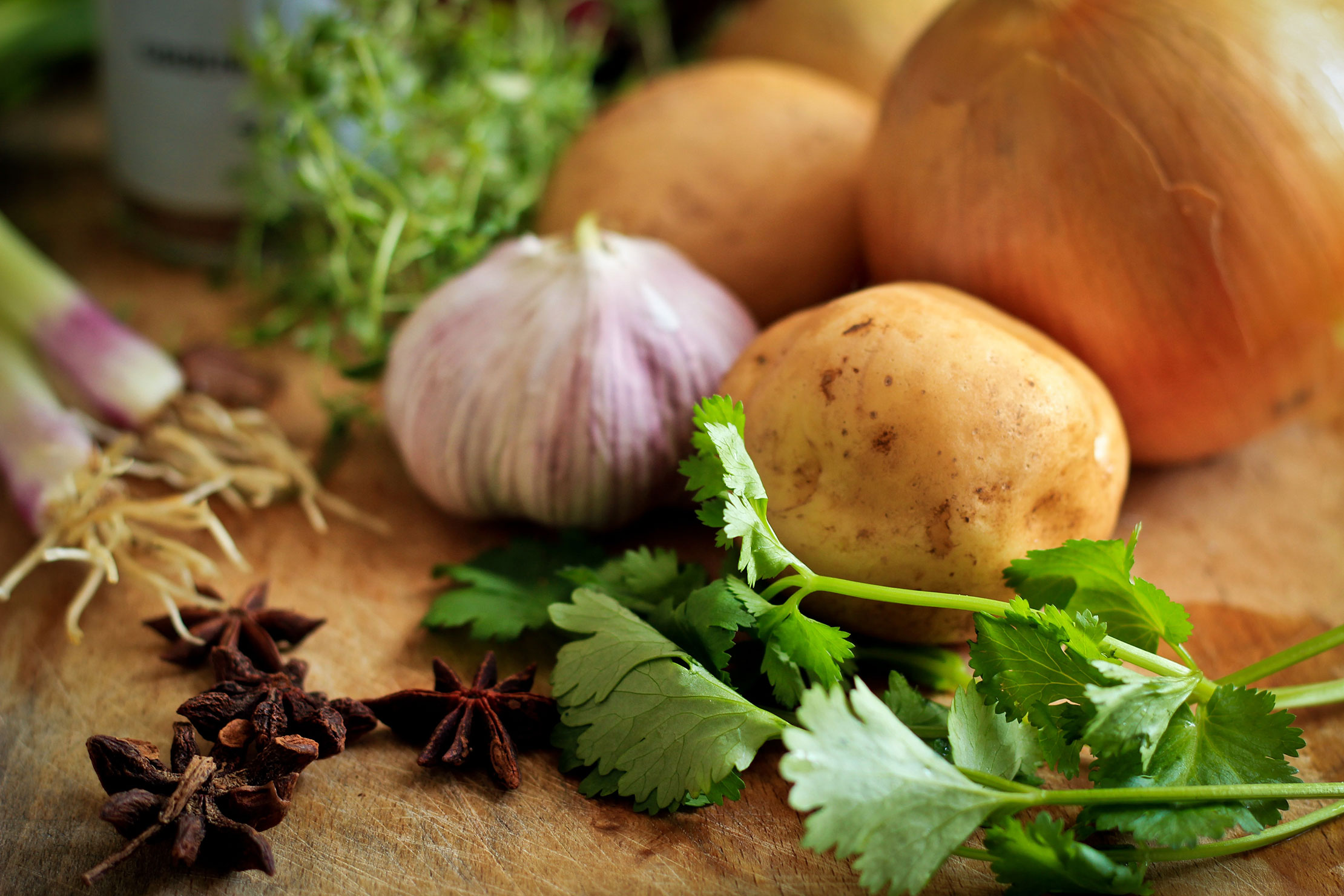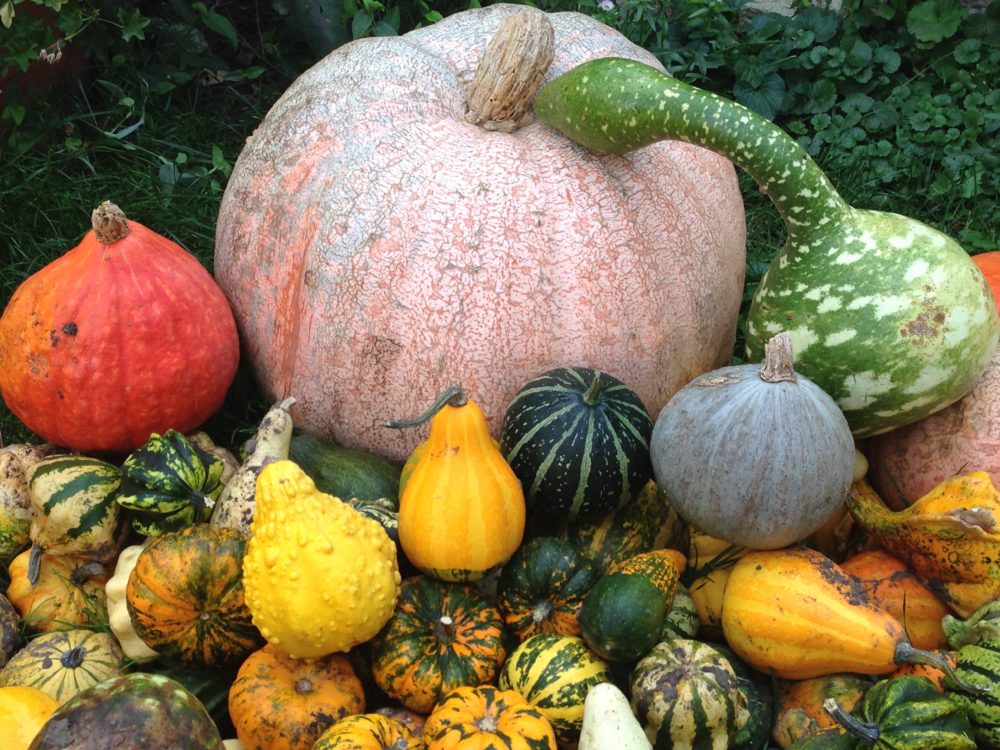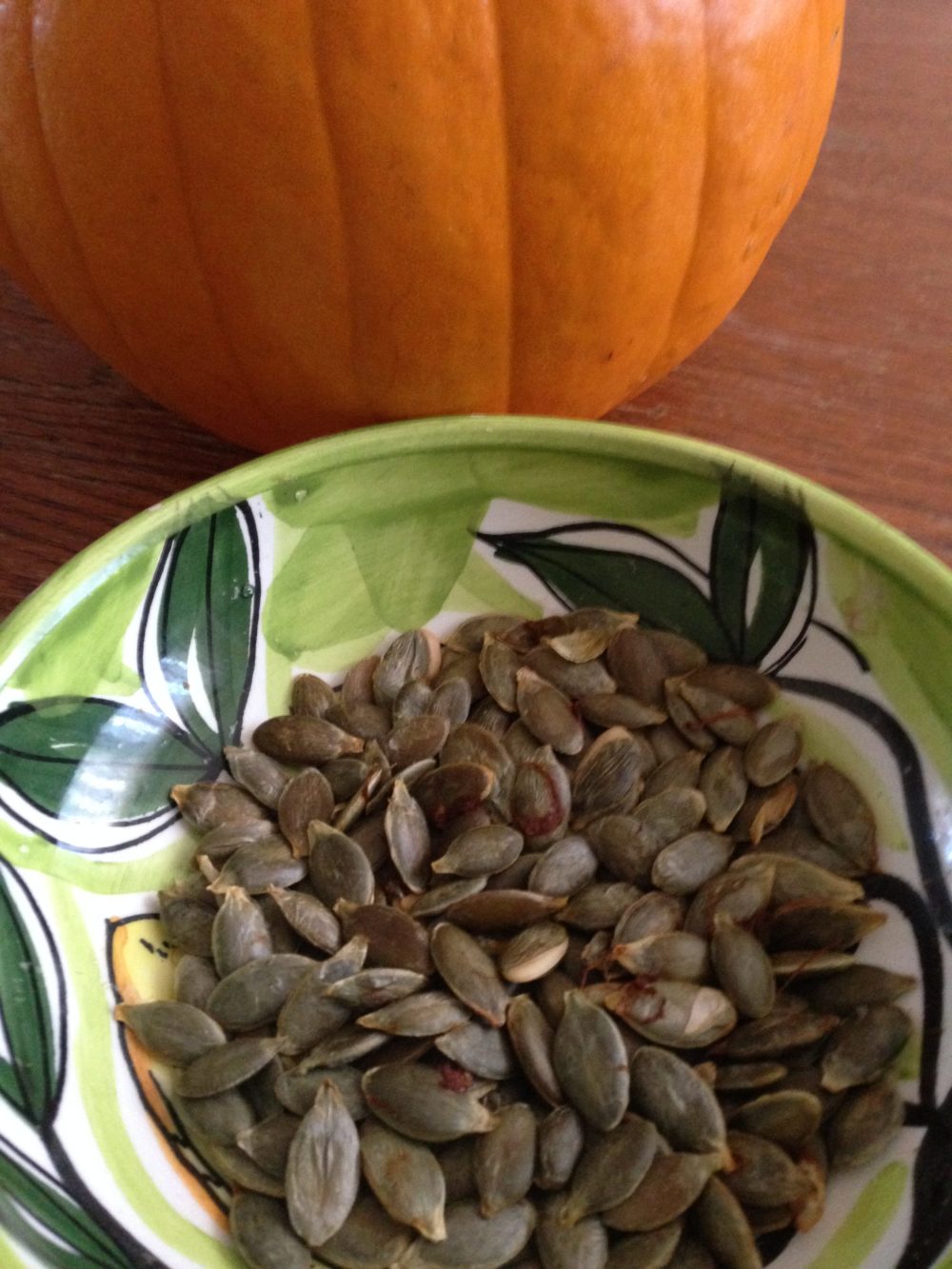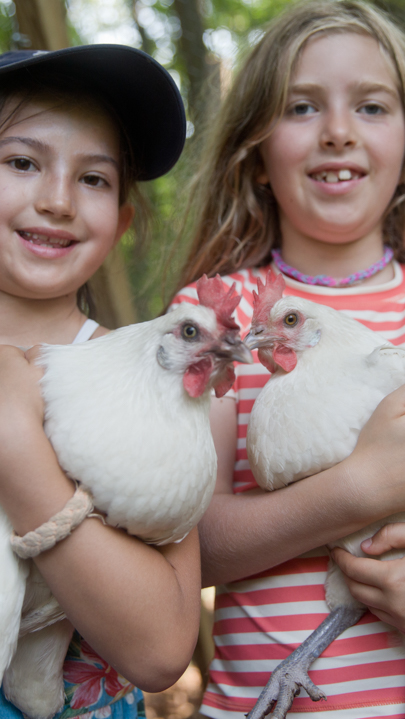The Season of Squash

Our cooking instructor, Eva Szigeti, describes one of fall’s most notable vegetables and some imaginative uses for it.
If summer is the peak in the circle of the seasons, then winter is the valley, and fall is a gentle stroll downhill into the land of winter. Fall is a season that brings no promises, but instead, it gives a lot on the spot. To compensate for cooler weather, it warms us with colors of gold, orange, rusty browns and reds, and nourishes us with an abundant harvest. The dominant taste of the season is sweet. Fall treats us with the sweetness of ripe wine grapes, fresh apples and apple cider, roasted squash, sweet potatoes, carrots, and parsnip. Towards the end of the growing season, peppers in the garden turn not only red, but also sweet; so too do many leafy greens, as temperatures drop.
There is a lot one could do on a nice fall day, and there are lots of ways to engage children in seasonal activities. So much can be done with just some winter squash and pumpkin (which is also a type of winter squash). One could carve a pumpkin of course, visit a farm for a pick-your-own pumpkin event, decorate the house with pumpkins or squash, or use them as materials for craft projects.

Any type of pumpkin or winter squash will bring the feel of autumn into our homes, but gourds are especially sought after as a seasonal decoration. While not edible, they can be used to craft functional objects; such as birdhouses, bowls, vessels for liquids, instruments, or even gnome homes. With a little imagination they can be turned into improvised toys. Their unusual shapes will make our kids think of dinosaurs, daisies, dumplings, swans, and who knows what else.
A French heirloom pumpkin, Rouge vif D’Etampes, also known as a Cinderella Pumpkin, will transport us into the realm of fairy tales without the magic touch of the Fairy Godmother. It is a fairly large pumpkin of vivid orange color, with a flattened and heavily lobed shape, resembling the fairy tale carriage of Cinderella–hence its name. I imagine it would be fun to use one of these to create a carriage for a favorite doll or a dwelling for a magical creature visiting your backyard. According to some sources, this variety had been cultivated by the Pilgrims and served at the second Thanksgiving dinner. Besides being the perfect pumpkin pie ingredient, it can serve as a lovely biodegradable serving dish for a squash soup. If simply put on a table or shelf it will be a statement in itself. Another French variety, Musque de Provence (or Fairytale Pumpkin), has similar great looks and qualities.
The sweet harvest is waiting to be embraced in the kitchen too. Winter squash can be enjoyed simply roasted, or mashed with a bit of cream and a dash of nutmeg for a side dish, used in soups, or in muffins and sweet breads. Acorn Squash or other smaller types like Baby Hubbard and Japanese Futsu can be filled with a variety of stuffing and baked. The flesh of pumpkin and succulent winter squashes works well as a filling for pumpkin pie. Seeds and fiber of any edible winter squash can be used for stock or as a snack for a flock of chickens. Pumpkin also offers edible seeds that taste great roasted. Aside from the high fat content, pumpkin seeds have abundant protein and lots of trace minerals (zinc, manganese, magnesium, copper and iron.) Even better for seeds than pumpkin is Kakai Squash. This medium-sized, slightly oblate squash with orange and dark green stripes is grown and valued for its hull-less or naked seeds. Instead of a shell, the seeds are covered with a thin cellophane-like membrane. Since they do not require shelling, one is tempted to eat them fast, and the possibility of overeating is very high for everyone who loves the taste of freshly roasted pepitas. If there are any left after snack time, they can be used as an addition to your granolas, salads, pumpkin soup, breads, or rolls.

While munching on a handful of pumpkin seeds the other day, I found myself thinking about winter, and realized that I felt a certain melancholy about it being just around the corner. I sometimes find it hard to enjoy fall, because winter is next, with its cold and short days. But I’d like to be fair to this season of abundance, so I am reminding myself of all of Fall’s sweetness and gifts; stay in the moment, stay present to all of the beauty that is in it.
Roasted Pumpkin Seeds
(From A Fresh Pumpkin)
Do not discard seeds from your pumpkin intended for carving. You can make a Jack O’ Lantern and a great snack from the same pumpkin.
Scrape the seeds from the pumpkin with a large spoon. Clean away the stringy flesh. Rinse the seeds with water if needed. Spread the seeds in a single layer on a baking sheet, and let them dry for several hours in your kitchen or on a sunny spot outdoors. The seeds are now ready for roasting and seasoning.
I prefer my pepitas dry-roasted without any seasoning, but they can be flavored with a variety of spices. Most children will appreciate Pumpkin Spice Pepitas.
Dry-Roasted Pumpkin Seeds
- 2 cups raw pumpkin seeds (pepitas)
Preheat the oven to 300F. Spread the seeds in a single layer on a prepared sheet pan.
Bake for 20-25 minutes, stirring halfway through. Seeds should be golden and crunchy when done.
Pumpkin Spice Pepitas
- 2 cups raw pumpkin seeds
- 1 tablespoon olive oil
- 1 ½ tablespoons brown sugar
- 1 – 1 ½ teaspoons pumpkin pie spice
- ¼ teaspoon fine salt
Preheat the oven to 300F. Combine all ingredients and spread in a single layer on a prepared sheet pan.
Bake for 20-25 minutes, stirring halfway through.




